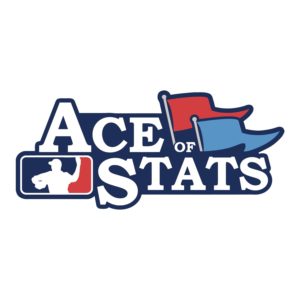Nolan Arenado will forgo his record $26 million arbitration salary for a position player record average annual salary of $32.5 million as he and the Colorado Rockies came to terms on an eight-year, $260 million deal (via Jeff Passan).
Arenado has been given a full no-trade clause and will be afforded the opportunity to walk away from the Rockies, if he wishes to seek out a new deal, after the 2021 season (via Ken Rosenthal).

Many believe that the Rockies overpaid, because, you know, “COORS!” But I contend that the Rockies may have actually gotten a club-friendly deal.
Over the past four seasons, Arenado has been worth the following dollar amounts (millions) in terms of WAR:
2015 – $46.4 (BR) | $36.0 (FG)
2016 – $52.4 (BR) | $40.5 (FG)
2017 – $58.1 (BR) | $45.2 (FG)
2018 – $44.6 (BR) | $45.4 (FG)
But…“COORS!” Right?
Wrong.
Both Baseball-Reference (BR) and FanGraphs (FG) have a ballpark factor in their WAR formulas, accounting for the infamous “Coors Effect.” Moreover, it is entirely possible, if not likely, that Arenado was actually worth even more in terms of WAR dollars, as neither formula account for – or are even really able to account for – the lesser known “Hangover Effect.”
Now, Kevin and I explain this phenomenon in much further depth in Incredible Baseball Stats, Version II (now available on pre-sale), but to give a mile high overview as to what the theory is, it is the idea that, while players do indeed see a boost in their offensive production when playing their home games at Coors Field, that boost in production is at home alone – and when the same player is on the road, his numbers experience a far more dramatic decline than a traveling player who plays his home games in, say, Philadelphia.
Bear in mind, aside from a batted ball’s carry at high altitude, a pitcher essentially loses his ability to effectively throw breaking pitches when visiting Coors Field, where Rockies’ players play half of their games – home advantage. Then, when Rockies’ players hit the road, they may see that very same pitcher, throwing an entirely different repertoire or even just other pitchers throwing pitches that they are not otherwise seeing in half of their games – road disadvantage.
Let’s take a by-the-numbers look at this…
Over those same past four seasons, the Rockies, as one would likely expect, have led baseball in slugging at home, at .502, topping the second place Boston Red Sox by 42-points. But over that same stretch, the Rockies have a road slugging percentage of just .383, virtually tied with the Philadelphia Phillies for worst in baseball, two-points fewer than the San Diego Padres, five-ticks beneath the San Francisco Giants, and 59-points shy of the leading Houston Astros.
This should lead one to believe one of two things: either that without the “Coors Effect” the Rockies, offensively, are basically the Padres – who, mind you, play 11.1 percent of their road games at Coors Field – or that the “Hangover Effect” is real and its negative impact is great.
But how great?
Well, going back to the past four seasons, MLB has slugged, as a whole, .414 – the Rockies have outperformed that by 21.0 percent at home (18.5 percent, home vs. home), but undershot it by 7.5 percent on the road (5.6 percent road vs. road). The Red Sox, who play in hitter-friendly Fenway Park, out-slugged MLB by 10.8 percent at home (8.9 percent home vs. home), but fell 1.2 percent short on the road (0.1 percent better road vs road).
This still seems to vastly favor the impact of the “Coors Effect” over that of the “Hangover Effect.”
But not so fast. That assumes that the Rockies were an otherwise average slugging team – the Detroit Tigers, if you will – and I am not sure anyone would argue that, “Coors Effect” or not.
Overall, Colorado out-slugged the league by 6.7 percent since 2015. Over that same period, the Astros topped the league by 6.0 percent and the Red Sox by 4.7 percent; the Tigers – your league average slugging team – by just 0.3 percent and, just for fun, even the Baltimore Orioles have bested league average by 2.0 percent.
This puts us at a bit of a standstill, as we only know how these teams performed in various stadiums and cannot do much to determine how any of these teams would perform in the proverbial vacuum and instead.
So, again, one is left to conclude one of two things: either that without the “Coors Effect” the Rockies are basically the Padres or that the “Hangover Effect” is real and its negative impact is great – so great, in fact, that it renders Coors Field’s impact nearly net neutral when compared to any other hitter’s park
Stat aside: The Padres have slugged just .439 at Coors Field over the past four seasons, by the way, just 5.9 percent above league average slugging during that span.
My conclusion: whatever effect aside, the Rockies signed Nolan Arenado to a record contact – despite this, it was a very club-friendly deal.




